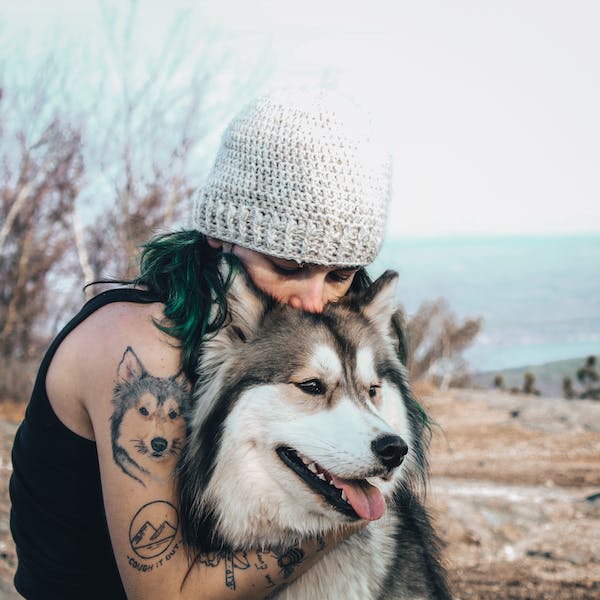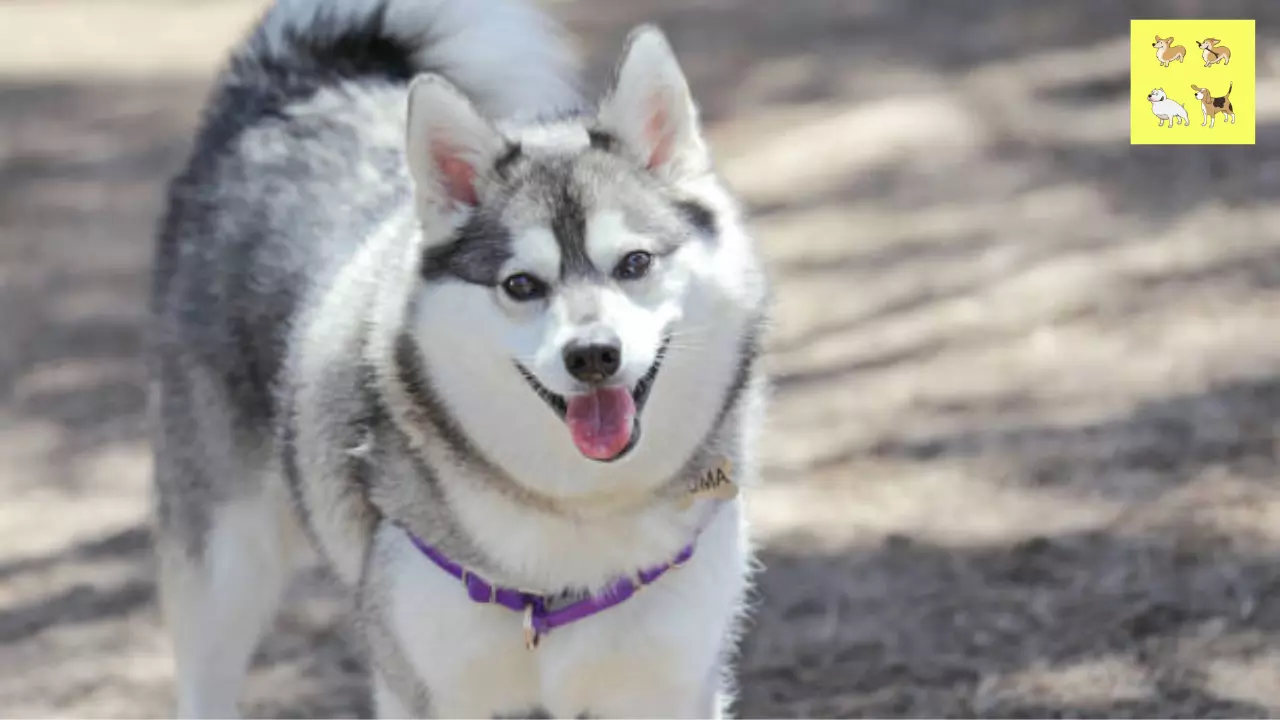Small dogs of the Alaskan Klee Kai breed are native to Alaska in the United States. They were initially bred in the 1970s by Linda Spurlin with the goal of producing a smaller dog with similar traits and appearance to the Alaskan Husky. Compared to other well-known dog breeds, the breed is relatively unknown, but its distinctive characteristics and personality traits have drawn an increasing number of dog admirers.
Everything you need to know about the Alaskan Klee Kai breed will be covered in this post. We’ll give a brief overview of the breed’s history and origins, as well as the benefits and drawbacks of owning an Alaskan Klee Kai. We will also go through the breed-specific traits, maintenance requirements, training advice, and commonly asked questions (FAQs). You will have a thorough grasp of the Alaskan Klee Kai breed by the end of this essay, which will enable you to decide if they are a good fit for you and your family.
Also Read
- Fila Brasileiro Dog Price In India | Complete Guide on Brazilian Mastiff
- Fila Brasileiro Dog Price In India | Complete Guide on Brazilian Mastiff
Pros of Alaskan Klee Kai
Trainable and intelligent
Dogs of the Alaskan Klee Kai breed are exceptionally smart and trainable. They pick things up quickly and are innately able to comprehend and carry out instructions. Positive reinforcement strategies like food and praise are quite effective at motivating them to learn new tricks and jobs.
Quick Learners
Alaskan Klee Kai dogs have a high level of intelligence and are rapid learners. They naturally grasp and obey instructions, which makes training them rather simple. They appreciate receiving positive reinforcement during training and are eager to please their owners.
Adaptable
Adaptable: Alaskan Klee Kai dogs may thrive in a variety of settings, including urban apartments and rural settings. As long as their needs for exercise and social interaction are met, they can adapt to various living circumstances.
Great Problem Solvers
outstanding Problem Solvers: Alaskan Klee Kai dogs are terrific at occupying themselves and figuring out puzzles because they are outstanding problem solvers. Their intense curiosity and love of discovery aid in the development of their problem-solving abilities.
Friendly towards kids and other animals
Alaskan Klee Kai dogs are reputed to get along well with kids and other animals. They value family and enjoy spending time with kids; they frequently play mild games and cuddle together for naps.
Also Read
- Papillon Dog Price In India In 2023 | Appearance and Characteristics
- German Spitz Price in India in 2023 | Characteristics & Lifespan
- German Spitz Price in India in 2023 | Characteristics & Lifespan
Family-Oriented
Family-Oriented: Alaskan Klee Kai dogs are friendly towards children and are family-oriented. They make excellent playmates for children because of their kind and energetic personalities. They also take pleasure in being a part of a family and like being the centre of attention.
Non-Aggressive
Alaskan Klee Kai dogs are not violent towards people or other animals, even youngsters. They are typically sociable and amiable, making it simple to acquaint them with new people and animals. To ensure that kids develop strong social skills, however, appropriate socialisation is still required.
Social
Dogs of the Alaskan Klee Kai breed are friendly and like to be around other dogs and animals. Since they are pack animals by nature, they flourish in settings where they may engage in social interaction. They are therefore a fantastic option for households with other pets.
Low Maintenance
Dogs of the Alaskan Klee Kai breed are regarded as low-maintenance pets. They don’t need to be frequently bathed or groomed, and their coat is rather simple to maintain. They need to be brushed frequently to maintain the health of their coat and avoid matting, however they do moderately shed, especially during seasonal changes.
Grooming
The comparatively low-maintenance coat of Alaskan Klee Kai dogs does not call for frequent bathing or grooming. However, they do moderately shed, especially throughout the changing of the seasons, and will need to be brushed frequently to keep the health of their coat.
Exercise requirements
In order to stay healthy and happy, Alaskan Klee Kai dogs need daily walks or playtime. They can be exercised indoors if necessary, but they prefer to run and play outside a fenced-in yard. Obesity and other health problems can be avoided with regular exercise.
Health
Alaskan Klee Kai dogs have no particular breed-related health issues and are generally in good overall health. They can, however, develop some health problems, including as allergies, hip dysplasia, and eye disorders, just like all dogs. Their general health and wellbeing can be ensured with routine veterinary exams and preventative care.
Cons of Alaskan Klee Kai

Excessive Energy
The high energy levels of Alaskan Klee Kai dogs can be a benefit for some owners, but they can also be a drawback for those who are unable to provide their dogs the proper amount of exercise and mental stimulation to keep them happy and healthy. Alaskan Klee Kai dogs can grow bored, nervous, and exhibit disruptive behaviours such excessive barking, digging, or chewing on furniture if they do not obtain enough mental and physical exercise. Additionally, because of their high quantities of energy, they might not be suitable for sedentary lives or apartment living. To avoid these problems, owners should be willing to commit to giving their pets plenty of exercise and mental stimulation.
Exercise Requirements
Due to their high energy level and need for frequent exercise to maintain good health and happiness, Alaskan Klee Kai dogs. They enjoy running and playing, and to meet their demands, they require at least 30 to 60 minutes of exercise each day. If they don’t get enough exercise, they could get bored and act out.
Boredom-Induced Destructive Behavior
Due to their high level of activity, Alaskan Klee Kai dogs might exhibit disruptive behaviour if they are not given enough mental and physical stimulation. If they get bored or frustrated, they could chew on the furniture, dig holes, or do other harmful things. Exercise, training, and enrichment activities done properly can help stop destructive behavior brought on by boredom.
Not Apartment-Friendly
Not Apartment Friendly: It is not advised to keep Alaskan Klee Kai dogs in apartments. They need a lot of room to move about and play, so if you keep them in a limited living place, they could get frustrated or act out. They are ideally suited for energetic people or families who can give them regular exercise and mental stimulation, or for houses with fenced-in yards.
Possible health problems:
Although Alaskan Klee Kai dogs have a generally good health, they are still prone to some genetic and non-genetic health problems. As with any breed, it’s critical for prospective owners to be aware of these potential health issues and take action to manage or prevent them in order to protect the wellbeing of their dog. The most prevalent medical conditions that Alaskan Klee Kai dogs may have are covered in this section, including inherited diseases, allergies, and dental difficulties.
Hereditary Disorders
Alaskan Klee Kai dogs may be predisposed to conditions including luxating patella, hip dysplasia, and eye issues like juvenile cataracts and progressive retinal atrophy (PRA). Alaskan Klee Kai puppies should only be purchased from reputable breeders who check their breeding dogs for these and other genetic health issues.
Allergies
Some Alaskan Klee Kai dogs may be prone to allergies, which can cause ear infections, skin rashes, and itching. Owners should keep an eye out for irritation or infection in their dog’s skin and ears, and they should visit a veterinarian if they think their dog might be allergic to anything.
Prone to Dental Problems
Alaskan Klee Kai dogs are also susceptible to dental problems include tooth loss, tartar buildup, and gum disease. To assist maintain their oral health, owners should develop a regular dental care routine for their dogs, which should include brushing their teeth and giving them dental chews or toys.
Independent and Resilient
Even the most seasoned owners may find training Alaskan Klee Kai dogs challenging due to their independent and obstinate attitude. They have a strong will and are intelligent and rapid learners, but they may need strict and persistent training to stop undesirable behaviours. Furthermore, due to their independence, they could wander off during training sessions or get sidetracked, which can make training more challenging. In this section, we’ll talk about some of the typical issues owners may run across while trying to manage and train the independent and unyielding Alaskan Klee Kai breed.
Training Challenges
Alaskan Klee Kai dogs can be independent and obstinate, which can make training them difficult for some owners. When learning new orders and behaviours, they might need more perseverance and patience than other breeds. With these dogs, positive reinforcement training techniques, such as incentives and praise, frequently work best.
Tendency to Wander
Due to their independence, Alaskan Klee Kai dogs may have a propensity to stray if not kept in a safe environment or under proper supervision. They might run after little creatures or get sidetracked by intriguing smells. To keep their dogs from straying, owners should keep them on leashes or in secure, fenced-in areas.
Attention-Seeking Behavior
Alaskan Klee Kai dogs are renowned for their attention-seeking behaviour, which includes leaping up on people, whining or barking for attention, among other attention-seeking actions. These behaviours can be addressed with the right training and socialisation, and giving them plenty of mental and physical activity can help keep them from getting bored and attracting attention in unhealthy ways.
Expensive
The Alaskan Klee Kai breed’s possible drawback is that they can be rather expensive to buy and maintain, which may prevent some would-be owners from getting one. We’ll talk about the pricing and availability of Alaskan Klee Kai dogs in this area, compare their cost to that of other breeds, and examine any difficulties some owners could have paying for a pricey dog.
Alaskan Klee Kai dogs are an uncommon breed, which may increase their price. Depending on the breeder and the dog’s pedigree, an Alaskan Klee Kai puppy might cost anywhere from $1,500 and $5,000 on average. Potential owners should think about recurring costs including feeding, grooming, veterinary care, and training in addition to the initial purchase price.
The Alaskan Klee Kai is more expensive than some breeds and less expensive than others when compared to other breeds. They cost more than popular breeds like Labrador Retrievers and Golden Retrievers on average, but less than some other tiny breeds like French Bulldogs or English Bulldogs.
Alaskan Klee Kai Has A Scent
If not consistently groomed and cared for, the Alaskan Klee Kai might develop an odour, just like any other dog breed. They do not, however, have a distinct smell that is particular to the breed. Grooming and showering frequently might help reduce any unwanted odour. It is crucial to remember that a dog’s diet can affect how they smell, therefore feeding them a high-quality diet can keep them smelling fresh.
Are Klee Kai from Alaska loyal?
Yes, Alaskan Klee Kai are renowned for their owner loyalty. They are devoted to their families and develop close relationships with them. Individual dogs, like any breed, may have unique personalities and temperaments that might influence how loyal they are. The development of a close relationship and loyalty between the dog and its owner can also be facilitated by proper socialisation and training.
Additional factors
Before adding an Alaskan Klee Kai into your home, you should take into account additional variables in addition to the advantages and disadvantages covered above. We’ll talk about shedding in this section, one of the breed’s distinguishing traits, and examine the drawbacks and advantages of owning a dog that sheds moderately.
Shedding
Although Alaskan Klee Kai dogs do shed, it is not to an excessive extent. Their thick double coat needs to be brushed frequently to avoid matting and tangles and to reduce shedding. A shedding blade or other specialised equipment may be used by some owners to remove loose fur, while others find that regular grooming keeps shedding under control.
According to the owners’ own experiences, shedding varies according to the dog and the season. While some dog owners claim that their dogs shed more frequently in the spring and autumn, others discover that shedding is more consistent all year long. While some dog owners may worry about their dog’s shedding, it’s important to remember that all dogs shed to some extent, and moderate shedding can usually be controlled with routine grooming.
People who suffer from allergies may find it beneficial to own a dog that sheds moderately. They may shed less frequently, which may result in less dander in the air, which helps lessen allergy problems. No dog breed, meanwhile, is entirely hypoallergenic, and different people may react differently to dogs.
In general, future Alaskan Klee Kai owners should take shedding into account, but it can be controlled with routine grooming and maintenance.
Noise Level
The Alaskan Klee Kai is noted for being noisy and has a propensity to bark pretty frequently. However, their barking may be managed with the right training and socialisation. Alaskan Klee Kais have been known to bark at anything that attracts their attention, including other dogs, strangers, and even squirrels, according to some owners. The Alaskan Klee Kai, on the other side, have some owners who have discovered that they are quite calm and only bark when necessary, such as to warn their owners of imminent danger. Prospective owners should think carefully about their living arrangements and whether excessive barking can be an issue.
Socialization Needs:
To avoid shyness, fear, and hostility towards humans and other dogs, Alaskan Klee Kai require early and continuous socialisation. During their crucial socialisation stage, which lasts from 7 weeks to 4 months of age, they should be exposed to a range of people, sights, noises, and settings. Additionally, owners ought to expose their Alaskan Klee Kai to fresh events all their lives.
Alaskan Klee Kai owners’ own experiences have demonstrated that well-socialized dogs are self-assured, amiable, and manageable. They are typically well-behaved in social settings and relish meeting new people and dogs. Nevertheless, socialisation can be difficult, especially for new dog owners. To effectively socialise a dog, it takes time, effort, and patience, and it can be challenging to locate opportunities to expose the dog to novel situations.
Before introducing an Alaskan Klee Kai into their house, prospective owners should think about their capacity to offer proper socialisation for the breed. If the dog’s owner is unable to give enough socialisation, the canine may exhibit behavioural issues that may be challenging to treat.
Relationships with Other Animals
Alaskan Klee Kai dogs are well known for having outgoing, sociable characteristics that make them wonderful pet companions. It may be difficult to maintain them in the same home as cats or other small animals due to their high prey drive and propensity to chase tiny creatures. This impulse can be diminished with the right socialisation and training, but supervision of their interactions is crucial until trust has been established.
When done gradually and under supervision, owners of Alaskan Klee Kai dogs report success in socialising their pets to other dogs and even cats. When introduced properly and taught to respect boundaries, this breed can live in harmony with other pets.
Companionship, playtime, and more opportunity for the dogs to get exercise are advantages of owning many pets. However, it’s crucial to take into account the additional duties of caring for, training, and grooming each animal and make sure the owner can provide all pets the proper attention and care.
Conclusion
The Alaskan Klee Kai is a rare and intriguing breed with both benefits and drawbacks. The breed requires little upkeep in terms of grooming, is intelligent and trainable, and is kind towards kids and other animals. But they can also be independent and stubborn, high-energy, and prone to health problems. The breed can be pricey, and socialisation and exercise are necessary to keep it from engaging in harmful behaviour out of boredom.
It’s crucial for potential owners to thoroughly weigh the advantages and disadvantages of the breed and choose whether an Alaskan Klee Kai is the best fit for their way of life, financial situation, and personality. It is advised to invest in early socialisation and training as well as to locate a reputable breeder who places a high priority on the health and well-being of their dogs.
File size
For the proper owner who is prepared to make the effort to meet their demands and provide them a happy and fulfilling life, the Alaskan Klee Kai is a great breed.
FAQs Related to Alaskan Klee Kai
Here are the FAQs about Alaskan Klee Kai:
Are Alaskan Klee Kai good with kids?
Yes, Alaskan Klee Kai are typically friendly towards children. They are affectionate, devoted, and playful. Children should be taught correct dog interaction, as with any breed, to prevent any mishaps.
How much do Alaskan Klee Kai shed?
Alaskan Klee Kai shed its eggs at a modest rate. They lose their undercoat twice a year, and to reduce shedding, brushing should be done more frequently then.
How much exercise do Alaskan Klee Kai need?
Alaskan Klee Kai are high-energy dogs and need plenty of exercise to stay healthy and happy. They need at least 30-60 minutes of exercise each day, such as brisk walks, jogs, or playing in a fenced yard.
Are Alaskan Klee Kai hypoallergenic?
No, Alaskan Klee Kai are not considered hypoallergenic. They shed moderately and produce dander, which can trigger allergies in some people.
What are the common health issues with Alaskan Klee Kai?
Alaskan Klee Kai are generally healthy dogs, but they can be prone to certain hereditary health issues such as patellar luxation, eye problems, and cardiac issues.
How do I find a reputable Alaskan Klee Kai breeder?
To find a reputable Alaskan Klee Kai breeder, it’s important to do your research and ask for references. Look for breeders who health test their dogs, are knowledgeable about the breed, and provide a clean and safe environment for their dogs.
Can Alaskan Klee Kai live in apartments?
Alaskan Klee Kai are not generally recommended for apartment living, as they are high-energy dogs that need plenty of exercise and space to run. However, with enough exercise and mental stimulation, some Alaskan Klee Kai may do well in an apartment.
Are Alaskan Klee Kai easy to train?
Alaskan Klee Kai are intelligent dogs, but they can be stubborn and independent. Early socialization and training is important to ensure they become well-behaved and obedient dogs. Patience, consistency, and positive reinforcement training methods are recommended for this breed.








